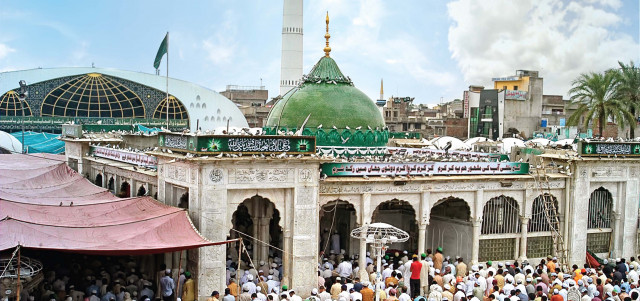Shrines feel repercussions of Data Darbar blasts
The number of visitors to Mian Mir and other Sufi shrines in Lahore has plummeted since the twin blasts at Data Darbar

Shrines feel repercussions of Data Darbar blasts
They whisper their prayers, though there is no one around to hear them apart from the breeze and a flock of pigeons gathered under a large mulberry tree.
“I’ve never seen this place so quiet on a Thursday,” says Saba Pervaiz, 32, one of the devotees at the shrine of Mian Mir, an influential 17th century Sufi saint.
“Today is unlike 20 years ago or even two years ago,” she adds. “This place used to be packed during Ramazan.”
The number of visitors to Mian Mir and other Sufi shrines in Lahore has plummeted since the twin suicide blasts at Data Darbar that killed 50 people almost two months ago. Consequently, these shrines have been receiving fewer donations.
“We used to get at least 600 people on Thursdays. Now it ranges from 200 to 300,” says Mehmood Alam, who manages security and events at the shrine.
This security consists of six policemen who guard it around the clock, checking visitors at the barricades leading up to the entrance. Only one of the four entrances is active, and it shuts at 10pm, four hours earlier than previously.
After the Data Darbar blasts, Alam says, he wrote to the Auqaf Department asking for CCTV cameras, security gates and more police guards, but he did not receive a response.
Shah Jamal
The shrine of Shah Jamal is one of the most popular in Lahore. “Before the attack approximately 2,000 devotees used to turn up on Thursday nights, but now barely a few hundred show up,” says Afzaal Naqvi, the administrative manager of the shrine.
“I myself feel nervous entering the shrine amidst all the patrolling policemen,” he says. The shrine used to get almost Rs80,000 in donations each week; now it gets half that.
The decline in visitor numbers hasn’t just hurt the shrine. Naqvi says that 10 of the 14 shops that line the road leading to it shut down because they didn’t get enough customers
Security had been a concern even before the Data Darbar attacks on July 1. The shrine was at the height of its popularity when it hosted performances by dhol maestro Pappu Saeen, but the administration asked him to stop performing four months ago after it received a warning of a security threat from Ichhra police.
“His [Pappu Saeen’s] presence generated a brilliant atmosphere and contributed greatly in terms of revenue,” says Omar Khayyam, an administrator at the shrine. “But there were up to 5,000 people coming here on Thursday nights to see him and we couldn’t put their lives at risk.”
Data Darbar
The heaviest police presence is at the scene of last month’s carnage. Data Darbar, the biggest shrine in Lahore, is guarded by 108 policemen at any given time, working in three eight-hour shifts every day. It employs 450 management staffers and 150 sanitary workers.
The Darbar still gets around 40,000 visitors a day, but it used to get 250,000 a day before July 1, says Babar Sultan Gondal, the shrine’s daytime manager. He expects a similar decline in donations.
Asked if he fears another attack, Gondal says, “Yes. I have a persistent feeling of nausea. It just makes one more careful.”
The increased police patrols and other security measures have not convinced people to return to the shrine in the same numbers they used to before the attacks. “It’s a little too soon,” says Gondal.
For some, the risk of visiting shrines is worth it. Back at Mian Mir, Saba Pervaiz smoothes out her yellow, floral-print kameez and gives a gap-toothed smile to her daughter. Pervaiz’s mother started bringing her here 20 years ago. Now she is carrying on the tradition with her own daughter, and she has no intention of stopping.
She points to the pigeons in the big mulberry tree in the courtyard.
“The souls of the true disciples of Mian Mir are said to visit him through these pigeons,” Saba says. “Their numbers remain the same.”
Published in The Express Tribune, September 5th, 2010.



















COMMENTS
Comments are moderated and generally will be posted if they are on-topic and not abusive.
For more information, please see our Comments FAQ